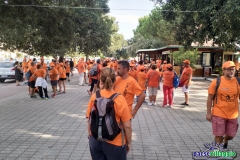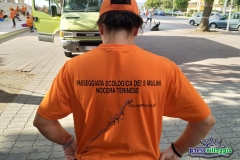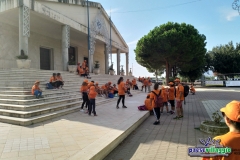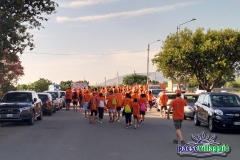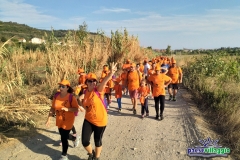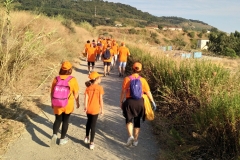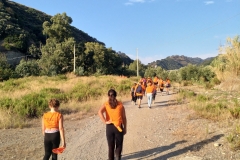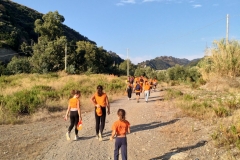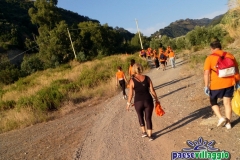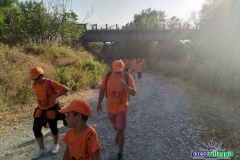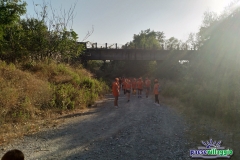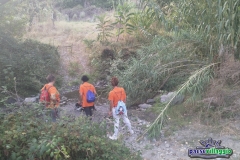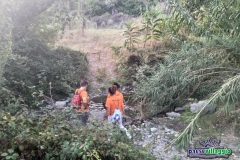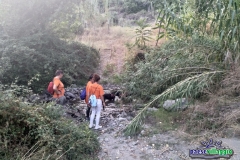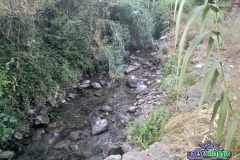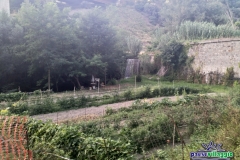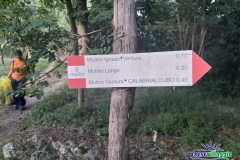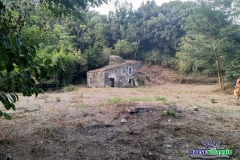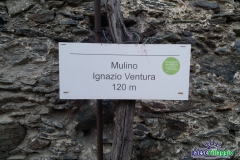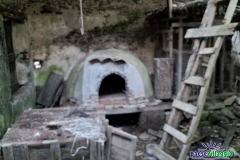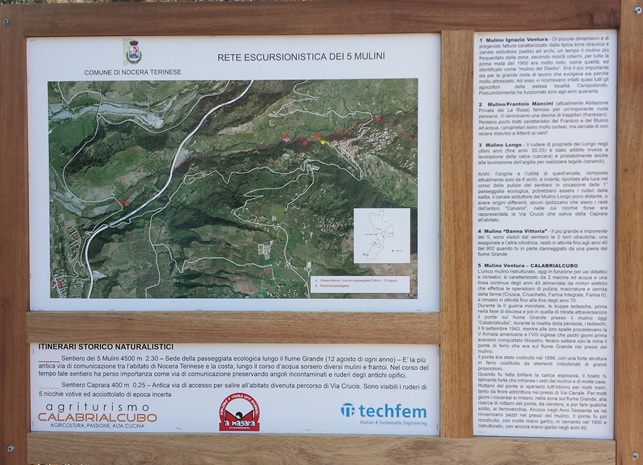
Also this year, for the sixth consecutive year now, the traditional walk of the mills organized by Agriturismo CALABRIALCUBO took place. An event with a mixed historical and naturalistic theme that includes, starting from the church of Nocera Marina and most of it to the side of the river Grande, a path where 5 mills meet up to Nocera Terinese Superiore, located near the farm premises CALABRIALCUBO, where you can visit the last of the mills in one of the rooms of the old house, now part of the farm, appropriately renovated and modernized.

As the caption of the sign at the beginning of the path reads, it is a 4.5 km path that runs in about 2.5 hours and that together with the preparation in the square in front of the church commits pleasantly for about 3 hours. It takes place on August 12th of each year.
 So there are 5 mills that meet during the journey:
So there are 5 mills that meet during the journey:
- Ignazio Ventura mill – Small in size and exquisite workmanship characterized by the typical hydraulic tower and arched adduct (saitta), once the most frequented mill in the area, according to today’s memories, throughout the first half of the 1900s it was very well known, as quality, and identified as “mill of Destro”. It was the most important for both the large amount of work that took place and because it was very well equipped. In fact, almost all the farmers of the same town of Campodorato resorted to it. Presumably it worked until the forties.
- Mulino / Frantoio Mancini (currently the private residence of La Rosa) – famous for an imposing Persian wheel. There were about ten trappitaries (millers) working there. There are few characteristic features of the Frantoio and the water mill, the owners are very courteous, but try not to disturb and … Beware of dogs!
- Mulino Longo – The ruins owned by the Longo family in recent years (late 20s-25s) has been used instead to work with clay to make tiles (ceramiles).
Arches: the origin and usefulness of this arch, currently composed of only 6 arches, is uncertain; brought to light during the cleaning of the path for the first ecological walk, may be ruins of the saitta, the adductor channel of the Longo Mill not far away, or have different origins, some speculate that they are the remains of the ancient “Calvary”, in the niches of which the Via Crucis was perhaps represented, rising from Caprara to the inhabited area. - “Danna Vittoria” Mill – The largest and most impressive of the 5, are visible from the path the two hydraulic towers, one hexagonal and the other cylindrical, remained in business until the 40s of the 900 when it was partly damaged by a flood of the river Grande.
- Ventura mill – CALABRIALCUBO – The only renovated mill, now in operation, is characterized by 2 water mills and a continuous line of the 40s powered by electric motors that performs the operations of cleaning, grinding, and sorting the flour (Crusca, Cruschello , Integrale flour, Flour 0), remained in business until the end of the ’70s. During the Second World War, the German troops, first in the descent and then in the retreat phase, crossed the bridge over the river Grande at the mill today “Calabrialcubo”. During the ascent of the peninsula, the Germans, September 9, 1943, while behind them were the American army V and the English VIII that had conquered Nicastro a few days before, they blew up the iron bridge that was on the river Grande near the mill.
The bridge was built in 1886, with a strong iron structure consisting of bolted elements of large proportions.
When the explosive charge was made to shine, the roar was so strong that it broke the windows of the mill and many houses. The debris of the bridge spread all around for many meters, even to end up near Via Canale. For many days the inhabitants of Nocera set out, in the area of the river Grande, in search of the wreckage of the bridge, to be sold, and to make some money, to the iron traders. Still in the ’60s pieces were found near the mill. The bridge was then rebuilt, with much less grace, in cement in 1950 and renovated, with even less grace, in the 90s.
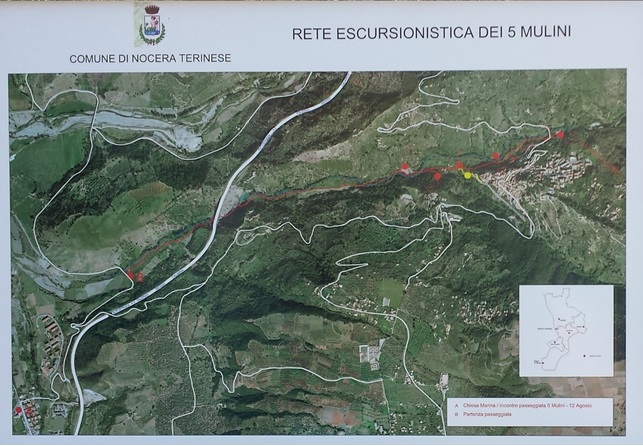
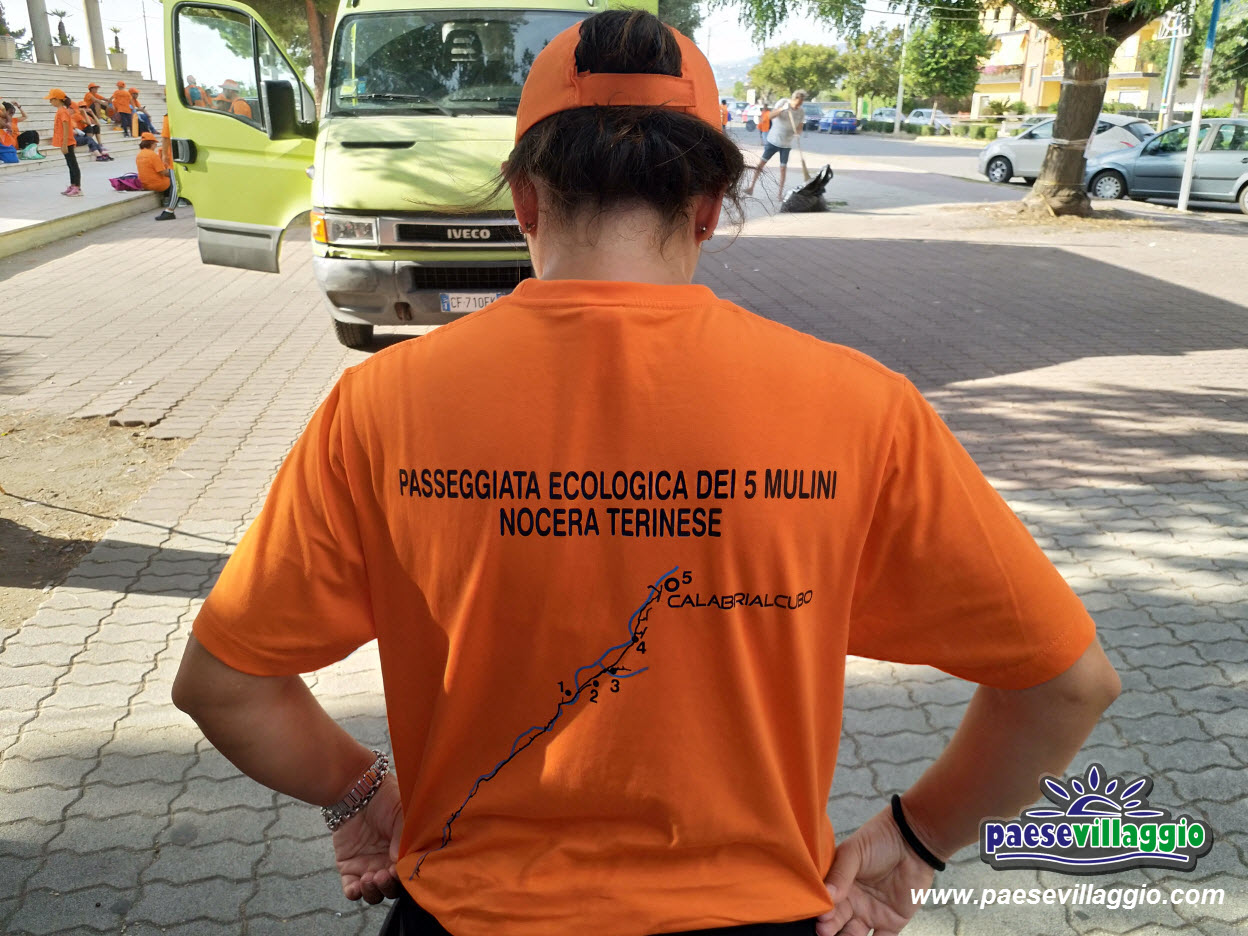 All the participants were offered T-shirt and hat, which worn before the walk, pleasantly marked all the participants forming a beautiful colorful trail of people. Those who wanted, then, could also receive gloves and bags to collect the unnatural material that could then be found along the way in order to clean up the path of waste that somehow has been brought there.
All the participants were offered T-shirt and hat, which worn before the walk, pleasantly marked all the participants forming a beautiful colorful trail of people. Those who wanted, then, could also receive gloves and bags to collect the unnatural material that could then be found along the way in order to clean up the path of waste that somehow has been brought there.
The evening ended, as usual, with a big picnic offered by the farm, sandwich with local products and drink (even self-produced beer, “‘a magara”), and with the return by shuttle bus organized by the same farmhouse.
We congratulate Marco Ferrini and his staff for this wonderful event that brings value to the territory and makes its lodging and productive activity known. In fact, his company Fangiano Farm (www.fangiano.it) as well as dealing with accommodation, produces excellent oil, makes catering and also produces a series of craft beers under the brand of ‘a magara, as well as doing many other things.
The photos below show the many moments of the walk. They are two sets of photos, so once you have seen the first set, you will need to click on the arrow at the bottom of the web page to access the second set of photos. Good vision and see you next year’s walk!
